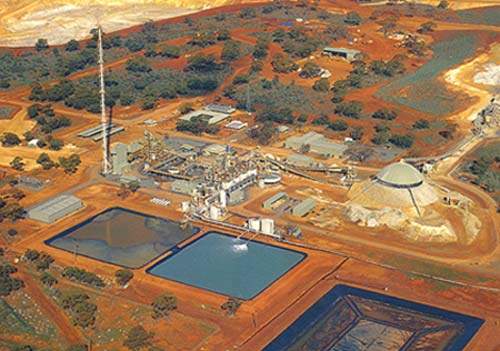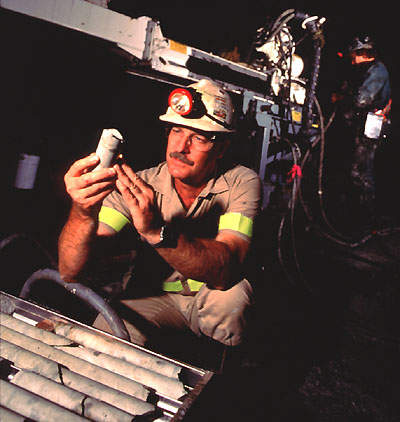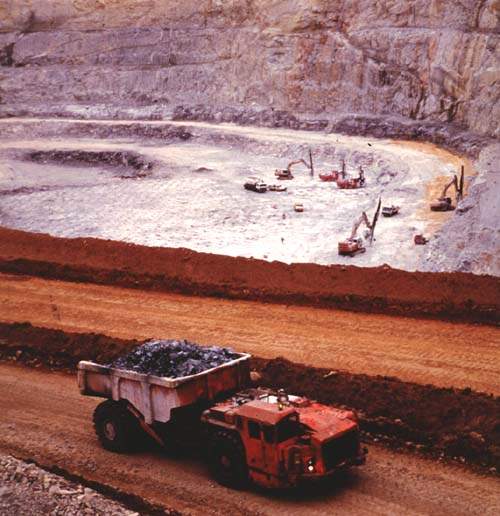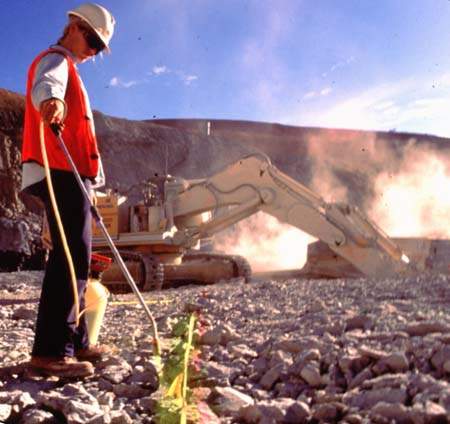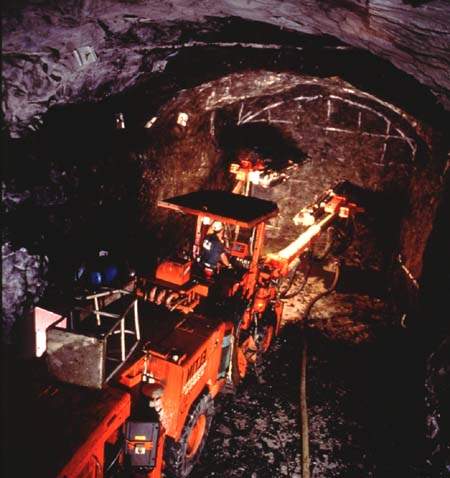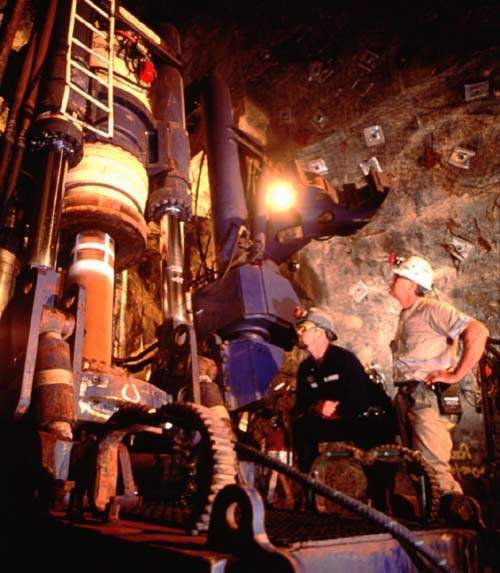Kanowna Belle gold mine is located some 20km north east of Kalgoorlie. Delta Gold NL and Geopeko Gold discovered the orebody in 1989. Construction began in 1992, the open pit was commissioned in mid-1993 and operations are now underground. In mid-1999, Delta Gold bought North’s 50% share for AUS$90m, and became the sole owner. Delta subsequently merged with fellow Australian company, Goldfields Ltd, to form AurionGold, which in turn was bought by Canada’s Placer Dome.
In early 2006, Barrick Gold Corp acquired Placer Dome in a US$10.4bn takeover, and now wholly owns the Kanowna group of operations, which includes Kanowna Belle, the Paddington mill and various other open-pit gold mines in the area.
GEOLOGY AND RESERVES
The deposit lies within the archaean Norseman-Wiluna greenstone belt and consists of a series of stacked lenses that have been identified over a strike length of 600m and to a depth of over 1,000m.
The orebody does not outcrop. Supergene-enriched oxide ore, lying some 35–45m below surface, is underlain by primary sulphide mineralisation. Some of the unaltered near-surface mineralisation is non-refractory, but with deeper reserves, the concentrates requiring roasting before leaching the gold content.
The proven and probable reserve at the Kanowna group of operations was reported at the end of 2005 as being 14.87Mt grading 5.1g/t gold, giving a total of 2.4Moz of contained recoverable gold. Currently known reserves are sufficient to support mining until beyond 2011, although Barrick Gold has decided to divest the Paddington mill and its feeder operations, and to concentrate on the core Kanowna mining-milling complex.
SEQUENTIAL MINING
Kanowna Belle was initially operated as an open pit and has since moved to an underground operation. Contractor Eltin Open Pit Operations was responsible for initial stripping, using a fleet of Liebherr 984 and 994 hydraulic excavators and Caterpillar 785 trucks, and for mining services until the open-pit bottom was reached at a depth of 220m. Underground production took over from the open pit in late 1998.
Eltin Underground Operations began work on the access decline and other underground developments in mid-1995. Although a shaft hoisting system was considered for the deeper levels, in mid-1999, North and Delta decided to continue the development of the mine using truck haulage, giving capital cost savings of more than AUS$50m over the mine life. The decline reaches a depth of 1,020m below surface, is 7.7km long and is being extended to provide access for exploration beneath the current reserves.
Underground resources are contained in five blocks of which Block A, the primary target, has now been mined out. Production now comes from the deeper blocks B, C and D, with the deepest, Block E, being evaluated. To date, long-hole open stoping has been used, with tailings paste backfill, but in 2004 Kanowna Belle started changing to a pillarless retreat mining system.
Equipment for underground has been supplied by Atlas Copco. Worth AUS$13m, the fleet consists of a Rocket Boomer 322S development drill rig, two Simba production drill rigs, a Boltec 335SH rockbolting rig, up to seven MT5000 50t-capacity mine trucks and up to three ST1800 Scooptrams. Ore is transported to surface up the ramp using a fleet of Caterpillar 775 haul trucks.
ORE PROCESSING
Run-of-mine ore is screened, with oversize being crushed to 200–250mm. A two-stage grinding circuit consists of ANI SAG and ball mills. Cyclone underflow from the ball mill forms the feed for primary flash flotation in a 23m³ cell.
The cyclone overflow is also treated by flotation, with the final tailings being leached in a 750m³ tank with cyanide and lime. Gold from the tailings leach is recovered through a series of four adsorption tanks. The mill capacity has been expanded from 1.6Mt/y to 1.9Mt/y, while gold recoveries are usually 89–90%.
ROASTING AND GOLD RECOVERY
Flotation concentrates are thickened then washed to remove chlorides. Two-stage exothermic, self-sustaining roasting is used to oxidise pyrite and remove arsenic.
Calcine from the Dorr-Oliver fluidised-bed roasters is cooled, then treated with lime and cyanide solution, and with gold recovery on to activated carbon in a series of seven adsorption tanks. Loaded carbon is stripped in a desorption circuit, gold being recovered by electrowinning on to steel wool and subsequent smelting to produce doré bars.
PRODUCTION
In 2004, Kanowna Belle produced 237,291oz of gold from 1.9Mt of ore grading 4.4g/t gold. The cash production cost was US$254/oz, with a total cost of US$316/oz. Production in 2005 reached 490,000oz for the Kanowna group of operations as a whole, at a cash cost of US$234/oz. Ore production totalled 4.5Mt at a grade of 3.5g/t gold.

